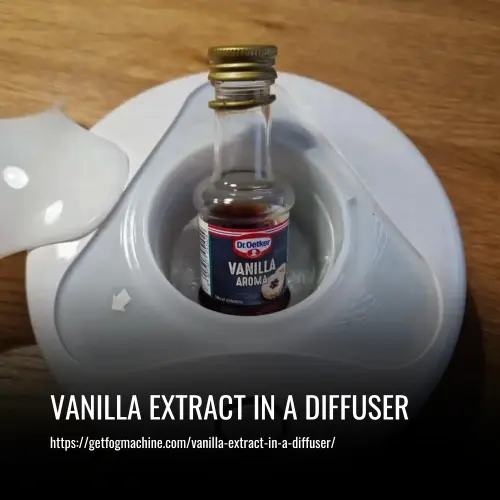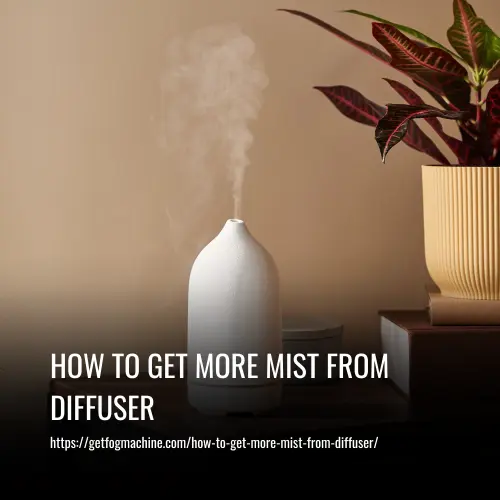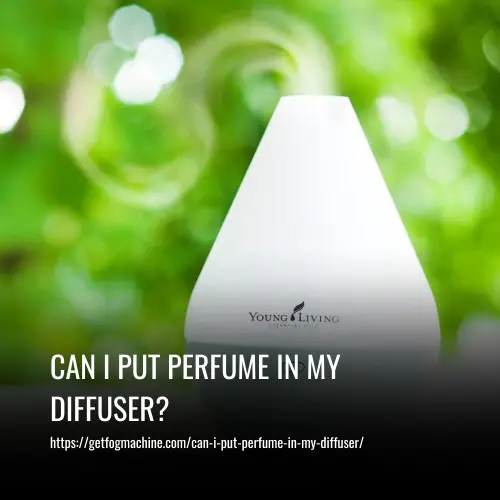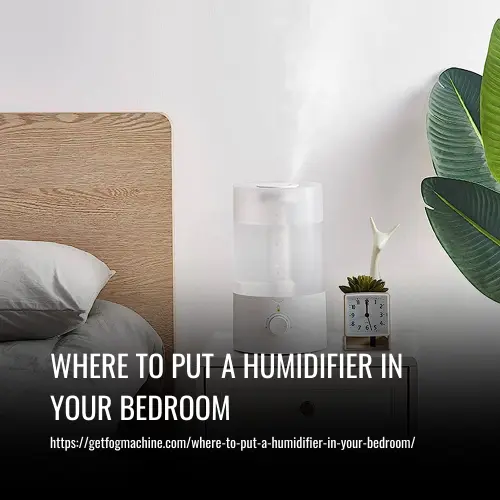Where to Place a Humidifier for Plants
This post contains affiliate links. As an Amazon Associate, we earn from qualifying purchases.
To ensure optimal humidity levels for indoor plants, it is best to place the humidifier about 3-5 feet away from the plants. This distance allows the moisture from the humidifier to settle on the plant leaves without directly showering them. Maintaining general indoor humidity levels is important for plants’ overall health and growth, particularly for tropical plants that thrive in humid environments.
By placing the humidifier at a suitable distance, you can provide a constant supply of moisture without risking excess water or creating excessively humid conditions. Additionally, this placement allows for proper air circulation and prevents the plants from becoming overly reliant on the extra moisture.
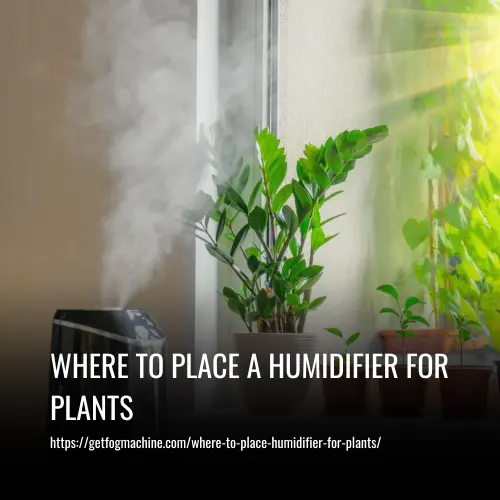
Why Do Indoor Plants Need A Humidifier
Indoor plants need a humidifier for a variety of reasons. During winter, indoor humidity levels tend to be low, which can negatively impact the growth and overall health of your plants. A humidifier can help increase the humidity levels and revive your indoor plants. Additionally, non-succulent plants require a constant supply of water or humidity to survive, making a humidifier essential for their well-being.
The indoor environment typically has low humidity levels, and unless you strategically place your plants in areas like the bathroom or kitchen, it can be challenging to attain the right humidity levels. Furthermore, some plants are accustomed to tropical climates with high humidity levels, making it difficult to recreate those conditions in areas with extreme weather changes.
By using a humidifier, you can create a humid environment that promotes the growth and survival of your indoor plants. Plus, humidifiers help prevent the risks of over-hydration, as they release moisture at a controlled rate, mimicking natural conditions.
Benefits of Using a Humidifier for Plants
Here are some Benefits of using a humidifier for plants:
1. Humidity levels fall in winter
During the winter months, indoor humidity levels tend to decrease, leaving house plants susceptible to drying out and dying. By using a humidifier, you can help your plants survive the winter months by maintaining an optimal level of humidity.
2. Low indoor humidity levels
Plants, just like humans, can be negatively affected by dry indoor air. Low humidity levels can lead to stunted growth, wilting, and even plant death. Using a humidifier in your home can help create a healthier environment for your plants, allowing them to thrive.
3. Humidifiers help non-succulent plants
While succulent plants can tolerate drier conditions, non-succulent plants require a higher level of humidity to survive. A humidifier can provide the necessary moisture for non-succulent plants to maintain their health and vitality.
4. Humidifiers help prevent over-hydration
Watering methods can often lead to over-hydration, which can be detrimental to plant health. However, by using a humidifier, you can ensure a constant and controlled level of moisture, preventing excess water and promoting healthier plant growth.
5. Tropical plants need high humidity
Tropical plants are adapted to high humidity levels, and recreating their natural environment can be challenging in areas with dry conditions. Using a humidifier allows you to provide the necessary humidity for tropical plants, keeping them healthy and thriving.
Proper Humidifier Placement For Plants
When using a humidifier for your plants, it is crucial to place it in the right location to ensure optimal effectiveness without causing any negative effects. Here are some guidelines for proper humidifier placement:
1. Distance from plants
It is recommended to place the humidifier around 3-6 feet away from your plants. This distance allows the humidifier to impact the humidity levels around the plants without causing condensation on the leaves or soil. Condensation can lead to mold or mildew problems and root rot due to over-hydration.
2. Central location
To ensure that the humidifier has a widespread impact on the room and all your plants, place it in a central location away from windows or doors. If you have a large room with several plants, you may need to use multiple humidifiers to provide full coverage.
3. Elevation
The humidifier should be placed 2-4 feet above the ground. This elevation helps with better air circulation and the distribution of humidity in the room. It also helps avoid water damage in case of any leaks.
4. Avoid wooden tables
It is important to avoid placing the humidifier directly on wooden tables as the humidity can cause the wood to warp or crack over time. Instead, place it on a ceramic tile or metal surface. Using a plant stand can also provide elevation and aid in humidity distribution.
5. Proximity to other electronics
Keep the humidifier at least a few feet away from televisions, computers, and other electronic devices. Placing it too close can lead to condensation, which can cause damage to the electronics.
By following these guidelines, you can ensure the proper placement of your humidifier for plants, maintaining optimal humidity levels and promoting healthy plant growth.
Factors to Consider When Placing Your Plant Humidifier
Choosing the right location for your plant humidifier is essential to ensure optimal effectiveness and prevent any potential negative effects. Here are several important factors to consider:
1. The size of the room
If you have a smaller room with a powerful humidifier, it’s crucial to place the device in another room to avoid excessive humidity levels. This is particularly important for plants that might not tolerate high humidity well.
2. The number of plants in the room
Having multiple plants in one room may require more than one humidifier to provide adequate coverage. Alternatively, you can consider moving some plants to another room if humidity levels become too high.
3. The type of plants you have
Different plants have varying humidity requirements. Tropical plants, for example, thrive in higher humidity levels (60-80%), while succulents prefer lower humidity (0-20%). Most other plants generally do well with humidity levels between 30-50%.
4. The humidifier output rate
The power and output rate of your humidifier influence its effectiveness. A smaller, personal humidifier may not sufficiently humidify a large room, but it can easily raise humidity levels excessively in a smaller space. Consider the appropriate device size for your specific needs.
5. Humidifier run time
The duration and frequency of running your humidifier impact its placement. If you only need it for short periods, placing it closer to the plants may be suitable. However, running it continuously might require positioning it further away to avoid excessive humidity levels.
6. Room temperature
The existing temperature in the room affects the humidifier’s performance. In colder rooms, the humidifier will work harder to increase humidity levels. Placing it closer to the plants allows them to benefit from the extra humidity. Conversely, if the room is already warm, positioning the humidifier away from the plants can prevent excessive moisture.
Consider these factors when determining the most suitable location for your plant humidifier. Remember to monitor humidity levels regularly to ensure your plants thrive in their ideal environment.
FAQs
Yes, it is recommended to use a humidifier near your plants every day, especially when the relative humidity level is below 40%.
The ideal distance between the humidifier and your plants is 3 to 5 feet. Getting too close may lead to overwatering and compaction of the soil.
You should run your warm mist humidifiers for at least 4-5 hours each day from morning to noon. Applying it too late in the afternoon risks leaving excess moisture in the air overnight, increasing the risk of mold.
One easy way to increase humidity is by spraying plants with a fine mist of lukewarm water. It’s best to use rainwater to avoid chemicals and lime. Place the plants in a sink or bathtub while spraying to prevent damage to furniture.
You should run your humidifier for an average of 5 hours every day, from morning until midday. This allows your indoor plants to absorb enough moisture for the day, reducing the risk of over-watering or under-watering.
It is advisable to use distilled or softened water instead of tap water. Tap water contains minerals that can lead to hard water, damaging the humidifier’s heating elements. Distilled water also eliminates the risk of harmful microbes and mineral build-up.
Placing a warm mist humidifier too close to your plants can burn them, denaturing chlorophyll and enzymes. If using a warm mist humidifier, place it away from the plants to allow the mist to cool before reaching them. For cool mist humidifiers, maintain a distance of about 3 feet to avoid over-watering.
Humidity over 80% is excessive for any plant, as it can hinder proper “breathing” and promote mold and fungus growth. To combat excessive humidity, improve airflow with a fan and move the humidifier a few feet away from your plants.
Conclusion
Finding the right location to place a humidifier for your plants is crucial for their overall health and growth. Different plants have different humidity requirements, so it’s crucial to research their specific needs before deciding on the type of humidifier suitable for them.
For tropical plants, a warm mist humidifier is recommended as it replicates their natural habitat. On the other hand, most indoor plants thrive with a cool mist humidifier which helps in maintaining optimal humidity levels. It’s important to consider the placement of the humidifier to ensure the effectiveness of the moisture distribution. Placing it near the plants but not too close to avoid excess moisture can be ideal.

